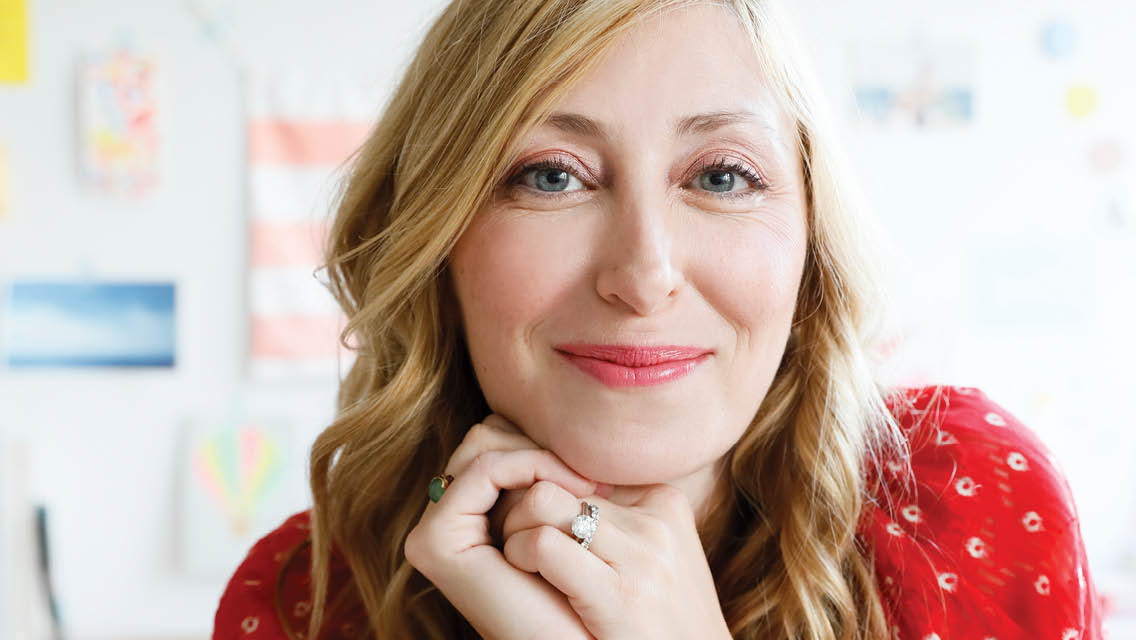Once upon a time, Christine Platt recalls, if someone had described her as a “minimalist” to one of her friends, they would’ve laughed.
“Oh my gosh. I had so much stuff!” she admits. “I wouldn’t say I was famous for being a bargain shopper, but I definitely had some folks who would follow me online and say, ‘The next time you go shopping, let me go with you!’”
At the time, Platt was married and working 18 billable hours a day as a corporate lawyer. She was also raising a daughter and maintaining a large, well-appointed home in the suburbs of Washington, D.C.
Like many people, she shopped for bargains as a way to relax and reward herself. Her home was full of things she didn’t wear or use, but she didn’t give it much thought until she quit her job to devote herself to writing children’s books full-time. Then she noticed.
“I had been working nonstop since law school . . . and I never really had to face our consumption. But when you’re in the house all day, the husband is gone, the kid is gone, you’re just like, ‘Why do we have all of these rooms? Why do we have all of this stuff?’”
Platt set out to simplify her family’s living space and began to follow some minimalism advocates on social media. Then an even bigger turning point arrived: Platt and her husband decided — with great goodwill — to separate.
Because she wasn’t bringing in any income, the most sensible place for her to relocate was the tiny condo she’d bought before she was married. She went from pursuing minimalism by choice to becoming a minimalist through circumstance.
She turned to her new online community for support. “We bonded over the irony of formerly having everything yet feeling empty,” she explains in her book The Afrominimalist’s Guide to Living With Less. She found new work, paid down her debt, and furnished the condo with careful intention.
Yet, after dwelling awhile in the textbook-minimalist environment she’d created — all white walls and neutral furnishings — Platt realized that she loved the minimalist philosophy of living simply, but she wasn’t so crazy about the minimalist aesthetic. So she decided to change it up.
“I decided that if I was going to live with less, I was going to have to do it my way,” she says. “That meant color, fabrics, textures, and culturally meaningful objects that were important to me.”
Today, Platt shares her “journey to more intentional living” with thousands of followers on her Afrominimalist platform, offering inspiration and encouragement to help them adapt minimalism to their own needs and preferences. She sees it as a long-term practice, one that involves looking at the emotional patterns that trigger us to overconsume.
When these no longer dictate our choices, we’re free to become more authentically ourselves, and our spaces can truly reflect and support us.
In addition to curating the Afrominimalist platform, Platt currently serves as interim director of the Antiracist Research and Policy Center at American University in Washington, D.C., where she lives with her daughter. She’s the author of the successful Ana & Andrew series of children’s books, which focus on African American history and culture, and she’s at work on a new series called Frankie at Five, about the young daughter of a reporter who dreams of becoming a journalist.
These are some of the thoughts she shared with us about her minimalist philosophy and practice.
Q&A With Christine Platt
Experience Life | You’ve written that mainstream minimalism is often alienating for marginalized communities. Why is this?
Christine Platt | Monochrome, barren aesthetics of mainstream minimalism have led people to believe that this is the only way to live with less, and it’s just not true. I tried to mirror these images, but they simply didn’t reflect my culture, history, and lived experiences — the result didn’t feel good. Additionally, throwing everything away and starting over isn’t reality for a lot of people, not only marginalized communities. Thankfully, the movement is evolving, but at one time, there was the belief that a person could only be a minimalist if they owned a certain number of items. Like, in what world?
EL | What led you to create Afrominimalism?
CP | The African diaspora’s history includes vibrant colors, fabrics, and textures that aren’t necessarily associated with mainstream minimalism. And I’ve met minimalists across every race and demographic who don’t have or want monochrome decor! So, I started sharing my approach and called it Afrominimalism. As a Black woman, I am honored that my philosophy has inspired others to reimagine minimalism for themselves.
EL | You write about how conspicuous consumption is very American, but members of the Black community can be especially vulnerable to it.
CP | For those of us who are the first in our families to have wealth, there’s less familial guidance on how to manage [it]. And limited financial literacy often means easy prey. For example, even though Black Americans are the least represented and economically served population, as consumers they command $1.3 trillion in annual buying power. Marketing companies are fully aware that culture is an influential part of our consumerism. We feel a sense of belonging and self-worth when we have the same things as people we admire, and this is how we are targeted.
First-generation college graduates and six-figure-income earners often find themselves caught up in conspicuous consumption, especially Black Americans. In addition to having the means to acquire all the things we believe represent societal success, we also tend to feel a sense of obligation to do so — for ourselves as well as family and friends.
EL | What is psychological ownership? How does it keep us attached to things we no longer need, use, and love?
CP | The psychology of ownership — the feeling that something is ours or an extension of us — is rooted in the power of touch. When we see something and pick it up, try it on, or test-drive it to decide whether we should buy it, our touch causes us to develop feelings of partial ownership, which quickly triggers the desire for full ownership. That’s why it’s hard to put things back, or why we feel compelled to buy certain things. We don’t want someone else to get what we’ve now deemed as ours.
Understanding the psychology of ownership was a game-changer for me. I no longer go to sales racks and touch all the things, because I know what’s going to happen: I’m going to want to buy all the things.
EL | You recommend that every object we own meet three criteria: I need it, I use it, I love it. You also say that sometimes we have to let go of things we love. That’s hard!
CP | I adapted the “need, use, love” philosophy as an objective way to determine what should remain in our lives. Obviously, if we look at these considerations individually, we can justify keeping everything we own. That’s why every item should meet all three criteria: you should need, use, and love it . . . or let it go.
Love often causes us to purchase or accept pretty things into our lives, but we don’t need or use them. It’s OK to simply admire something — we don’t have to allow it to take up space in our lives. Also, just as with matters of the heart, the things we love can change over time. That’s why the additional considerations of “need” and “use” can be helpful when it comes to decluttering.
EL | You write in your book that “less is liberation.” How has this manifested in your own life?
CP | The first freedom came with having order, with only having what our family needs, uses, and loves. Without all the clutter, I’m less distracted and enjoy our home so much! Being liberated from hours of cleaning and spending has resulted in more time to focus on my writing (and napping!). And, of course, there’s the financial liberation. I am more cognizant of what I purchase. I just don’t spend money the way I used to. Living with less has so many liberating benefits.
EL | Why is the language we use to describe the letting-go process so important?
CP | I believe that “letting go” encompasses a more holistic approach to the process. Purging often has a negative connotation because of dieting culture. Even the word “minimalism” can evoke feelings of scarcity that trigger loss aversion and cause us to focus more on what we’re losing rather than what we’re gaining. If you don’t want to become a minimalist, then don’t! But can you let go of things that no longer serve you and live with less? Can you become a more conscious consumer? How we frame our behaviors and lifestyles matters!
This article originally appeared as “The Liberation of Less” in the November 2021 issue of Experience Life.





This Post Has 3 Comments
Hi there,
I practice the need, use, love philosophy when purchasing goods. It’s refreshing to know others do as well. This approach keeps life simple. Thanks for sharing your beliefs.
Excellent and interesting article! I loved the story, philosophy and advice! Helpful to consider the criteria: need, use, love. Letting go!!
Thanks!
Great article! I am working on decluttering and changing over Summer and Winter clothes!